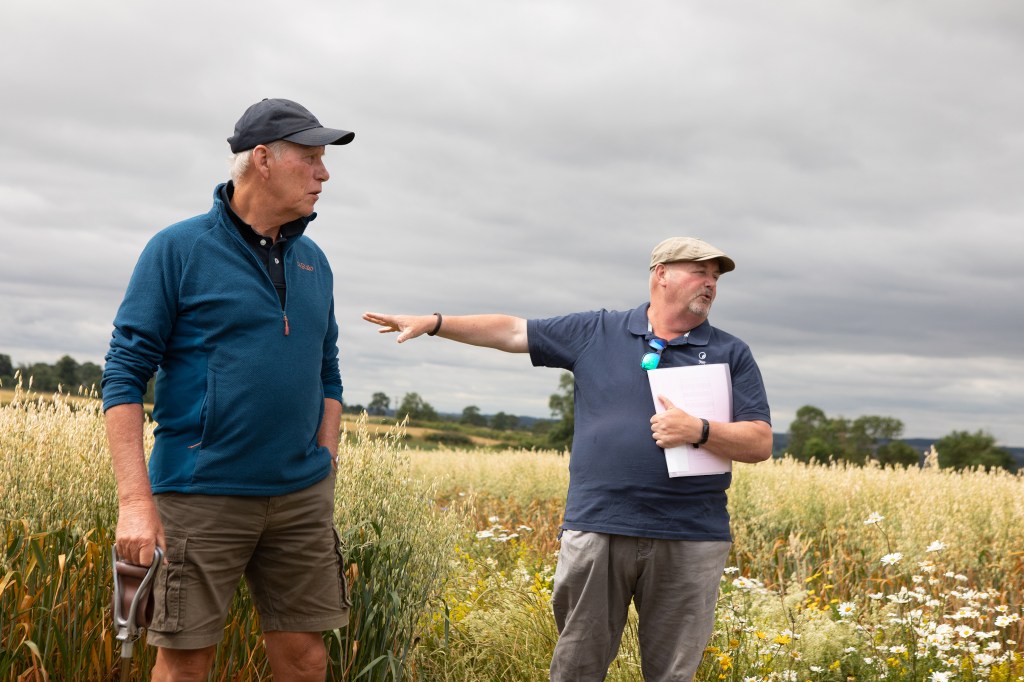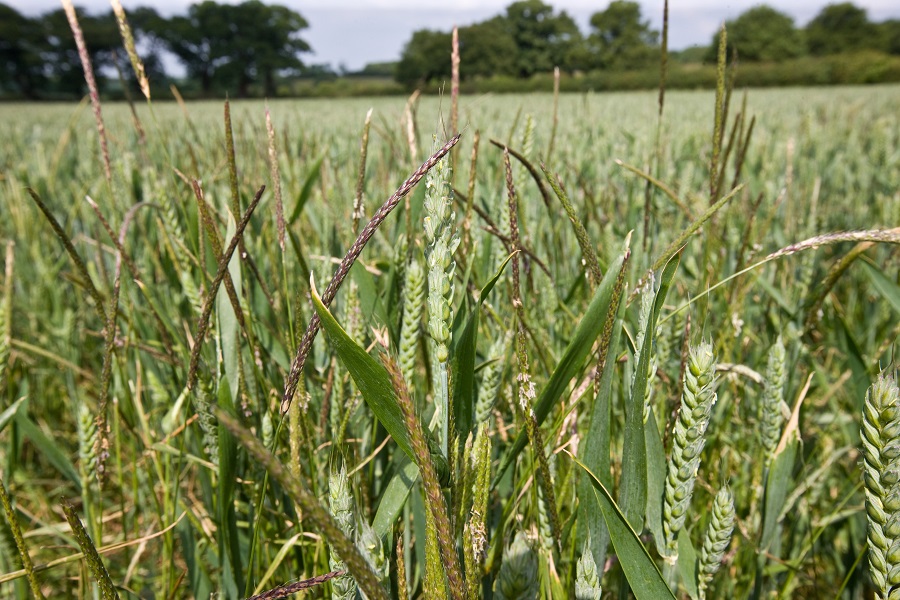Profitable September-sown winter wheat crops can be grown long-term on land with a history of serious blackgrass infestation, according to the latest results from Agrovista’s flagship trials Lamport AgX.
Work at the heavy-land site also suggests that growers who want to maximise their wheat area could use spring wheat in sequence with winter wheat to increase profits. However, in both cases great care must be taken to minimise blackgrass germination throughout the rotation, notably by using a sequence of cover crops and spring cropping, warns the firm.
Harvest 2022 trials
Results from harvest 2022 trials show that returning to a first wheat after a run of cover crops/direct drilled spring crops can produce exceptional yields, even on a heavy-land site such as Lamport with a background blackgrass population that exceeds 2000 plants/m2.
“First wheat yields this harvest ranged from 12.45-13.39/ha when following Lamport best practice,” says Agrovista technical manager Mark Hemmant.“We counted less than 1 blackgrass head/m2 in these trials, which shows what can be done.”
But sticking to the guidelines is vital to avoid risking going backwards with blackgrass control, he adds. “Before considering a return to winter wheat you have to reduce the weed seedbank to a low-enough level to give full-rate herbicides a chance to work. We know that even a stack containing the latest chemistry is not good enough where blackgrass numbers are high.”

Niall Atkinson (left) and Mark Hemmant
Previous cropping on these winter wheat plots consisted of a black oat-based cover crop followed by spring oats in 2019/20, followed by a cover crop then spring beans last season. The plots were direct drilled on 28th September at 300 seeds/m2 into a cheap linseed/berseem clover catch crop that was blown into the beans.
The first wheats received full-rate chemistry to control blackgrass – Proclus (aclonifen) plus Liberator (flufenacet+ diflufenican) and Avadex (triallate) followed by full-rate flufenacet early post emergence.
The winter wheat work is being extended to see whether wheat can feature in successive seasons to meet the needs of growers who want to maximise the crop on their land, particularly pertinent given the current price of wheat.
Second wheats
A second winter wheat is not part of the plan. Niall Atkinson, Agrovista’s farming systems R&D advisor, says previous experience at Lamport AgX shows second wheats undermined years of effort to control blackgrass. Levels soared close to those seen a decade ago, decimating yields and margins.
“We are still looking at growing successive wheat crops, but we are asking whether we can grow winter wheat one year and an autumn-sown cover/direct-drilled spring wheat the next, and so on.”
The winter wheat plot in this case had been under a cover crop/spring wheat regime for the past four years. Mark says: “This plot yielded just over 11t/ha. This was slightly down on the other winter wheat plots that followed a more mixed rotation. But over the years we’ve been achieving 7-8t/ha from a spring wheat after a cover crop at Lamport, so when we cost the successive wheat rotation it may well be the more profitable option.”
In addition, the system still provides the benefit of an autumn-sown cover, and a catch crop ahead of the winter wheat if desired, contributing to improving overall soil heath, says Niall. “As a grower I like this idea, and economically it looks great. But I do have slight concerns about take-all.”
Mark says within the life of Lamport AgX and in this plot specifically, which has just had a run of cereals, he has never seen the disease. “We think by breaking up the run of straw crops with black-oat based cover crops we’re breaking the take-all cycle, so we believe we can successfully grow a long run of cereals, plugging in winter wheat in the appropriate slots, in place of a mixed rotation.”
Lamport blackgrass control system
A sequence of cover cropping followed by spring cash cropping has achieved excellent control of blackgrass in crops at Lamport AgX over the past 10 years.
The technique uses a cover crop to condition the soil to enable spring drilling, but which is sown thinly into a shallow seedbed to encourage blackgrass to grow so it can be destroyed with the cover crop around Christmas.
This is followed by a spring crop, which is direct drilled to minimise soil disturbance and potential blackgrass germination.
“We’ve created a system that works fantastically well,” says Niall. “We’ve proved that it’s possible to grow successful spring crops on heavy, challenging soil while controlling blackgrass at the same time.”




